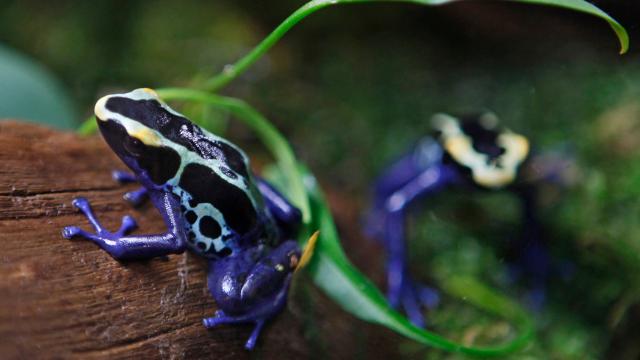Scientists aren’t known for being alarmists. And that’s exactly what makes a new study released Thursday on amphibians so, well, alarming.
The paper, a fungus that has travelled the world on the back of globalization and wildlife trade.
Nearly 20 per cent of those species are presumed extinct in the wild, and more species could be wiped out as humans speed along the sixth mass extinction.
Chytridiomycosis — caused by two strains of the fungus Batrachochytrium and known as chytrid for short — has spread from its original home on the Korean Peninsula to the rest of the world in an astonishingly short time.
The disease causes amphibians to shed their skin and eventually die of heart failure. Chytrid has likely driven amphibian declines since the 1980s, but the two strains were only discovered in 1998 and 2013 respectively. That has researchers playing catch up, and the new study is the first to take a global view of the toll chytrid has taken.
“There was a need to objectively estimate impact, which, unfortunately, turned out to be more severe than expected,” Frank Pasmans, an ecologist at Ghent University who worked on the study, told Earther.
The findings, which rely on data gathered by the International Union for the Conservation of Nature, other studies, and interviews with amphibian experts, show that chytrid has caused the single greatest biodiversity loss attributed to a disease, period. The researchers place chytrid fungus among cats and rodents—ignominious company — as the most harmful invasive species on the planet.
In addition to 18 per cent of amphibians hit by chytrid going extinct, another 124 species have seen their populations dip by 90 per cent or more, putting them on the cusp of extinction. Only 60 species have shown signs of recovery, though Pasmans said it appears that the worst of the epidemic has passed in places where the disease has been found, following a spike in the 2000s in western South America, the region that has been hit hardest overall by chytrid. But that doesn’t mean it’s over.
“With global change, the interaction between the fungus and the frog may change,” Pasmans said in an email. One of the strains of chytrid fungus, which primarily affects salamanders, could also spread to Europe or the Americas, “regions rich in highly susceptible salamander species.
“This should make us reflect on the damage that uncontrolled globalization may do to biodiversity. Amphibians are currently the most emblematic example of this, but similar situations can happen in any organism. If we want to preserve biodiversity, we will have to introduce barriers.”
What those barriers look like in a world with roads crisscrossing ecosystems and planes, boats, and trains crisscrossing the planet are hard to imagine. Globalization has opened a Pandora’s box of invasive species and diseases, and climate change is adding further stress.
That’s led to some wild interventions from carpet bombing islands with invasive rats or hunting snakes with glorified BB guns. Those techniques won’t necessarily stop an invasive disease, though. Pasmans suggested more regulated global trade, particularly when it comes to animals, could mitigate some of the risks.
Some scientists have even called for an import ban on all amphibians into the U.S. to stop the spread of the fungus. More aggressive interventions where chytrid or other invasive species or diseases have been found could offer another pathway forward.
If all else fails, there’s the option of last resort: hope that, as Pasmans said, “eventually, the frogs (at least those that didn’t go extinct) and the fungus will ‘learn’ to co-exist.”
